Poulain, Michel-Marie
Nogent-sur-Marne, Val-de-Marne, December 5, 1906 – Mandelieu-la-Napoule, Alpes-Maritimes, February 9, 1991
Montfermy, near Clermont-Ferrand, Puy-de-Dôme, Auvergne, the village seen from the Sioule valley, December 1958
Oil on canvas
Signed lower left “M M Poulain.”
H. 54 cm. / L. 65 cm.
On the back of the canvas, dedication by the artist “A ma grande amie / Madame / Crerwabery / MMPoulain / Montfermy / Auvergne France” (or Mrs. Crowberry ?). Located and dated on a label stuck to the stretcher.
Work cleaned and varnished by a professional restorer.
--
This painting depicts a view of the village of Montfermy (Puy-de-Dôme, Auvergne), seen from the opposite bank of the Sioule valley. In the foreground, a stone bridge with three arches crosses the river, bordered on the left by a cluster of low houses with red-tiled roofs. The eye is drawn towards the village, whose buildings fanout around the central church and its steeple. On the right, several bare trees line the roadside in the lower part of the picture, evoking a winter setting.
The composition is constructed in receding planes, leading the viewer through the river, bridge, rooftops, village and hills. The structure relies on clear, dynamic lines, particularly in the black-outlined forms and the geometric treatment of the architecture and trees.
The brushwork is both precise and vigorous, combining flat areas of matte colour with sharper highlights. The cool palette features bluish greys in the sky and façades,subdued greens in the slopes, and contrasting touches of red and brown in the rooftops. The trees, dotted with red accents, add a decorative rhythm to the composition. The sky, rendered in broad, hatched strokes, heightens the tension of the wintry atmosphere.
This work exemplifies Michel-Marie Poulain’s highly distinctive style, situated between graphic expressionism and decorative stylisation. The elevated vantage point, the monumental emphasis on architecture, and the synthesis of observation and invention place this landscape within the artist’s most characteristic output, where compositional rigour serves a silent, contemplative emotional register.
--
Poulain, Michel-MarieNogent-sur-Marne, Val-de-Marne, December 5, 1906 – Mandelieu-la-Napoule, Alpes-Maritimes, February 9, 1991
French painter, Michel-Marie Poulain also pursued a career as a fashion model and cabaret dancer.
Born in Nogent-sur-Marne, she served prior to her gender transition as a non-commissioned officer in a dragoon regiment. During the Second World War, she was captured and imprisoned in a Stalag, from which she escaped in 1941. After the war, she entered the world of haute couture and performance, working as a model for prominent designers and as a cabaret dancer in music halls. From 1946 onwards, she undertook a gender transition, including surgery, becoming one of the first openly transgender women to gain public recognition in France. In the following years, she settled on the French Riviera, opening an art gallery in Cannes where she exhibited her own work. She died in 1991 in Mandelieu-la-Napoule and was buried in Èze.
Michel-Marie Poulain’s body of work centres on scenes of everyday life, ballroom interiors, Parisian urban landscapes, and views of old Montmartre. Her style is marked by cloisonné figures, bold stylisation, and vibrant colours. Critics have at times compared her manner to that of Bernard Buffet (1928-1999), though her visual language remains highly personal, often infused with theatricality. In addition to easel painting, she also produced stained-glass windows and mural frescoes, notably for churches in the Alpes-Maritimes region. Among her major works are the stained-glass windows of the abbey at La Colle-sur-Loup, the decoration ofthe Chapelle des Pénitents Blancs in Èze (1953), and the restoration of the Chapelle Saint-Sébastien in Sainte-Agnès.
Her works are held in a number of public collections, including the museums of Cagnes-sur-Mer and Toulon, the Société muséale Albert-Figuiera in Èze, and the Centre national des arts plastiques (Cnap) in Paris, which preserves, among others, Le bridge (c.1945), Cathédrale de Strasbourg (c.1946), and Femme au châle (1953). She is also represented in several private collections, such as that of Luxembourgish architect Paul Retter (1909-1986), French statesman Albert Sarraut (1872-1962),and singer-songwriter Charles Trenet (1913-2001), who once remarked that hefound in her paintings “a reflection of his own poetic whimsicality”.
Michel-Marie Poulain exhibited in Paris from 1938 onwards in several notable galleries, including Galerie Clausen, Galerie Paul Blauseur, Galerie d’art du Faubourg, Galerie Sélection, Galerie Vendôme, and Galerie Marcel Bernheim. From 1931, she also took part in major salons such as the Salon d’Hiver, the Salon d’Automne, the Salon des Indépendants and the Salon des Tuileries. In 1952, she exhibited at Galerie Heyrène alongside Philippe-Marie Picard and Gérard Sekoto.
Her critical reception was marked by numerous favourable assessments. Henri Héraut praised her “first-rate” seascapes, particularly one of Quimper “rendered insilvery greys where the masts slash the sky parallel to the distant steeple”. Gérald Schurr described her as a “Montmartre expressionist”, while the Bénézit Dictionary of Artists noted her technical virtuosity in depicting views of old Paris.
The French playwright and screenwriter Jean Anouilh (1910-1987) firmly defended Poulain’s status as an artist, refusing to let her personal trajectory over shadow the quality of her work: “Poulain is not a colourful figure of the Parisian scene who happens also to paint – she is above all an artist, betteryet: a robust and conscientious artisan faithful to the laws of her art.”
The Franco-Italian writer, journalist, translator and playwright FrancescoRapazzini (born 1961), for his part, devotes several lines to her depictions of the Moulin Rouge, particularly French cancan and La cavalière du Moulin Rouge, in which the artist deliberately sacrifices detail in favour of expressive lines, emblematic colours and a vibrant composition. He sees in thema personal homage to that place which, for Poulain, symbolised all of France.
--






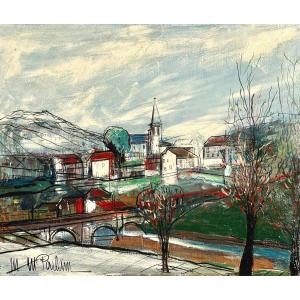




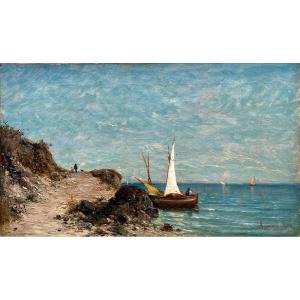
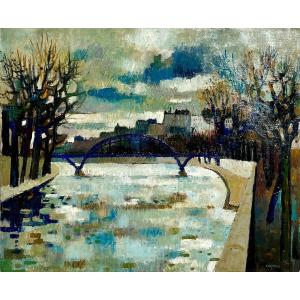

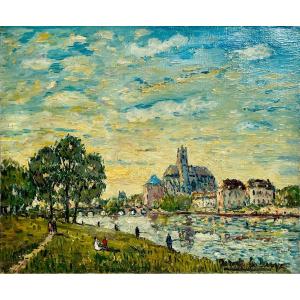





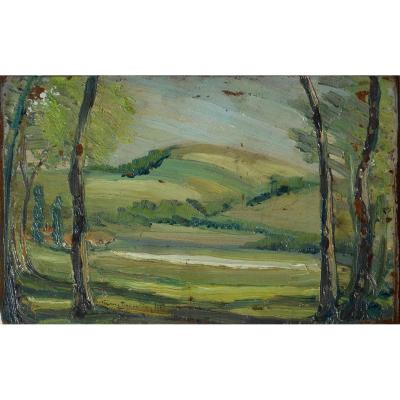
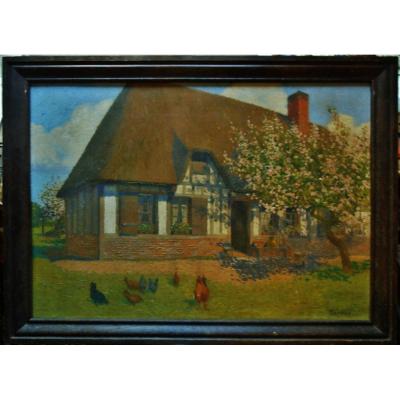




 Le Magazine de PROANTIC
Le Magazine de PROANTIC TRÉSORS Magazine
TRÉSORS Magazine Rivista Artiquariato
Rivista Artiquariato